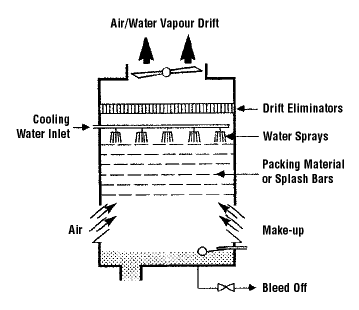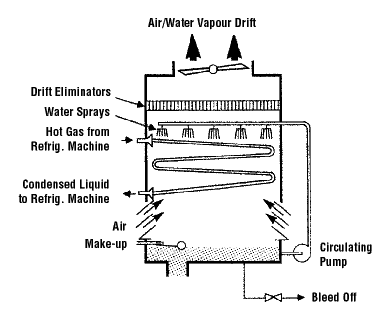The name "Legionnaires' disease" was coined in 1976 after a respiratory disease affected many delegates attending a convention in Philadelphia held by the American Legion of Pennsylvania. Eventually, the bacteria that was responsible for the disease was isolated and named as Legionella pneumophila.
Two distinct illnesses, Legionnaires' disease and Pontiac fever, have been associated with the Legionella species. Legionnaires' disease is a severe pneumonia. Pontiac fever is a mild, non-pneumonia influenza-like illness. It is not clear why the same causal agent can produce two distinct illnesses.
In this document, we refer only to Legionnaires' disease. Pontiac fever is apparently uncommon; only a few outbreaks have been reported in the world. One of them, a large one, was in Canada.
What is the cause of Legionnaires' disease?
The bacterium responsible for Legionnaires' disease belongs to the genus Legionella. There are approximately 35 Legionella species known to produce the disease. Legionella species are commonly found in any aquatic environment. They can survive for several months in a wet environment and multiply in the presence of algae and organic matter.
What are the signs and symptoms of Legionnaires' disease?
Legionnaires' disease usually begins with a headache, pain in the muscles and a general feeling of unwellness. These symptoms are followed by high fever (up to 40-40.5°C or about 104-105°F) and shaking chills. Nausea, vomiting, and diarrhea may occur. On the second or third day, dry coughing begins and chest pain might occur. Difficulty with breathing is often reported. Most patients develop pneumonia, a condition in which some of the lungs' air sacs fill with fluid or pus, so air is excluded. The pneumonia might involve both lungs and become so severe that hospitalization is required. Pneumonia resulting from Legionnaires' disease is similar to pneumonia from other causes. Laboratory tests are necessary for a confident diagnosis.
Mental changes, such as confusion, disorientation, hallucination and loss of memory, can occur to an extent that seems out of proportion to the seriousness of fever. Complete recovery can take several weeks. About 5-15% of known cases of Legionnaires' disease have been fatal.
How is Legionnaires' disease recognized and treated?
Legionnaires' disease may be suspected from the clinical features that seem typical of Legionella pneumonia. These features include diarrhea and symptoms attributable to the central nervous system, particularly confusion and loss of memory.
To distinguish Legionnaires' disease from pneumonia from other causes, special laboratory tests are needed that, normally, are not carried out on patients with fever and pneumonia. The diagnosis is confirmed by laboratory examinations that isolate Legionella from respiratory secretions (sputum) or testing a patient's blood. Laboratory blood tests are usually carried out to detect whether the amount of certain specific proteins (i.e., antibodies) has increased in the blood. An increase indicates infection by Legionella. Antibodies are produced by special cells of the body's infection defense system to reduce or neutralize the effect of invading microorganisms.
Two antibiotics that are commonly used to treat Legionnaires' disease are erythromycin and rifampin.
How is Legionnaires' disease transmitted?
The transmission of Legionnaires' disease is not completely understood. The normal presence of Legionella in such environmental sites as water and soil is not automatically associated with an outbreak of the disease. It appears that the Legionella microbe, in order to produce the disease, must reach the lungs. Inhalation of small particles of contaminated water (aerosols) or soil seems to be the key. New evidence suggests that aspiration is another way that the Legionella microbes enter into the lungs to cause the disease. Aspiration means choking during drinking, ingesting or swallowing. This allows fluids and particles to mistakenly enter the lungs instead of going into the stomach.
Evidence of person-to-person transmission has not been found. Therefore, attention has focused on the spread of Legionella by building ventilation systems. Legionella can thrive in warm stagnant water. When the circulated air picks up droplets of contaminated water, the bacteria can be transported throughout a building. If the droplets are small enough, they can be inhaled, thus providing a way for the bacteria to enter the lung.
How are Legionella bacteria spread in indoor environments?
Cooling towers are part of large modern air-conditioning systems. They are used to cool water and dissipate unwanted heat to the atmosphere through water evaporation. Warm water flows into the top of the cooling tower through spray nozzles (as shown in the schematic Figure 1). While the water passes through the nozzles, tiny airborne droplets are formed, providing maximum contact between the water and the air moved through the tower by fans. To prevent droplets from fusing into larger ones, splash bars are placed below the nozzles.

While falling through the tower, some of the water evaporates. Because evaporation consumes heat, the remaining water is cooled. Air pushed through the tower by fans also cools the water. Some droplets, known as drift, are carried out of the tower by the air stream produced by the fans. This water loss is reduced by a drift eliminator positioned at the top of the tower. The cool water collects at the bottom of the tower and is pumped back for another cycle.
Evaporative condensers (Figure 2) are similar in their construction and operation to cooling towers.

Cooling towers and evaporative condensers may contain Legionella and other microorganisms brought in by circulating air or water.
Legionella grows easily in the water, especially if algae and scale are present. Legionella can be dispersed with aerosolized drift or with the evaporate, but it may enter the air-conditioning system if there is a break between its ducts and those of the cooling tower or evaporative condenser.
Legionella has been found in hot water tanks, hot water propelled from shower heads and faucets and in whirlpool spas. It is not known whether Legionella enters a building's water from municipal feeder systems or adjacent contaminated cooling towers. The use of hot water with production of aerosols allows Legionella, if present in the water, to get into the lungs.
Who is more likely to get Legionnaires' disease?
Legionnaires' disease usually strikes middle-aged people, although cases have been reported in all age groups. The disease frequently occurs in people whose resistance to infection has been reduced, but apparently healthy people may also develop the disease. People suffering from cancer or chronic kidney diseases are among those less able to fight infections. Chronic diseases, such as diabetes and alcoholism, also seem to increase vulnerability to Legionnaires' disease. Cigarette smokers are more likely to contract Legionnaires' disease, perhaps because smokers are generally more likely than nonsmokers to develop respiratory tract infections.
What occupations are at risk for Legionnaires' disease?
It is not easy to identify all of the occupations posing the risk of Legionnaires' disease. In fact, the frequency of this disease occurring in workplaces cannot be evaluated or estimated because statistics are lacking.
Workers most at risk are those with occupations that require them to work in sealed buildings including those workers who maintain water cooling towers in air conditioning systems.
Some outdoor occupations should be considered at risk as well. Soil disturbed by bulldozing and areas where surface or aerosolized water discharge occurs can cause the exposure to the microorganism responsible for Legionnaires' disease.
How can we prevent Legionnaire's disease?
The likelihood of Legionella infection can be best reduced by good engineering practices in the operation and maintenance of air and water handling systems. Cooling towers and evaporative condensers should be inspected and thoroughly cleaned at least once a year. Corroded parts, such as drift eliminators, should be replaced. Algae and accumulated scale should be removed. These measures will not only control the growth of germs, but will also maintain operating efficiency. During cleaning operations in confined spaces, safety procedures for entry into confined spaces should be applied.
Cooling water should be treated constantly. Ideally, an automatic water treatment system should be used that continuously controls the quality of the circulating water.
The disinfectants commonly used in cooling towers are chlorine, dibromonitrilopropionamide, and ammonia derivatives called quaternary ammonium compounds. They appear to be effective in laboratory tests, but their value in practice has not been completely proven. It is important that any disinfectant used in a cooling tower water system be compatible with the tower's construction materials.
Fresh air intakes should not be built close to cooling towers since contaminated aerosols may enter the ventilation system. Air filters should be examined, cleaned and/or replaced periodically and tested for leaks. Cooling towers should be positioned so the drift or evaporate does not enter the fresh air intake. Hot water tanks, which might provide ideal conditions for the growth of Legionella, should be cleaned regularly. The water system should be flushed out on a regular basis to prevent the water from stagnating.
 9:17 PM
9:17 PM
 Kancil Jogja
Kancil Jogja

 Posted in:
Posted in: 
0 comments:
Post a Comment